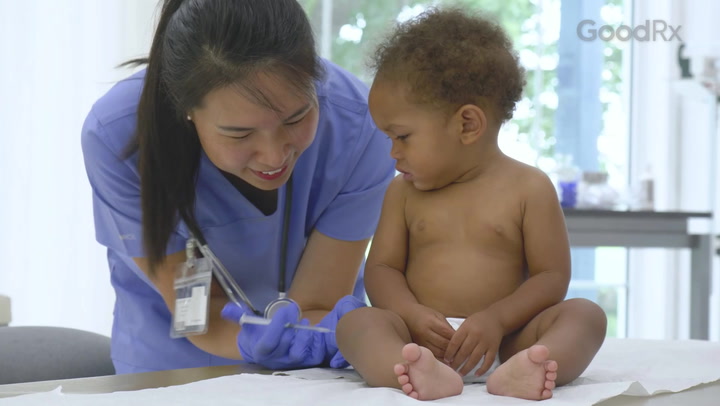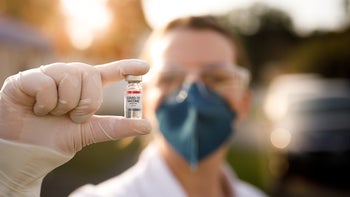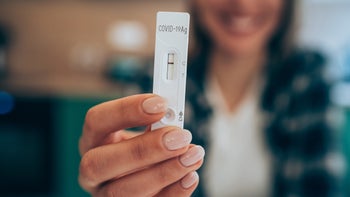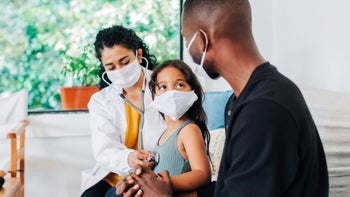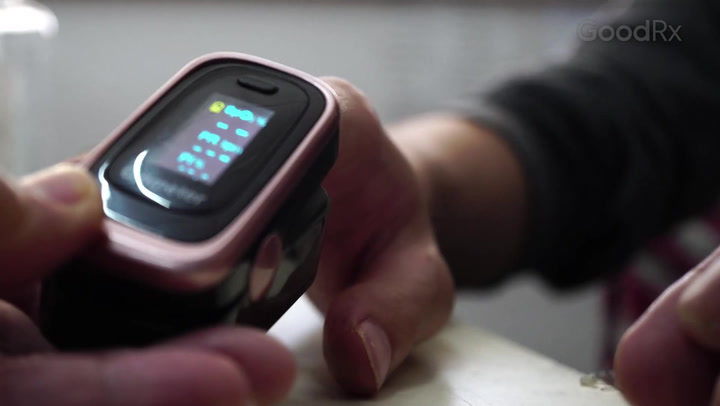
How Long Does COVID Live on Surfaces Like Food and Clothing?
Key takeaways:
The virus that causes COVID-19 spreads through air droplets from a person with the infection.
There’s low risk of getting COVID from a surface that’s been contaminated with droplets. And you won’t get COVID from food.
Staying up to date with vaccinations and staying home when you don’t feel well are the best ways to prevent the spread of COVID.

At the start of the COVID-19 pandemic, there was a lot of uncertainty about how the virus spread. Many people were concerned that you could get infected by touching surfaces or objects that had been exposed to the virus.
Scientists now know that COVID spreads through airborne droplets of saliva or mucus that contain the virus. Someone who is infected can spread the droplets when they exhale, cough, or sneeze. For someone else to get infected, these droplets need to come into contact with their mucus membranes (eyes, nose, lips, or mouth).
So what happens when those droplets land on surfaces like food or clothing? Even though a virus might be able to live on a surface for hours or days, that doesn’t mean it’s able to cause an infection. It’s possible for a virus to be detectable but no longer infectious. In short, there’s minimal risk of getting COVID from a surface that’s been contaminated with droplets.
SHINGRIX (Zoster Vaccine Recombinant, Adjuvanted) is now $0 for almost everyone*
Get SHINGRIX at the pharmacy or in-network doctor’s office today. 98% of privately insured people pay $0 and all Medicare Part D beneficiaries pay $0 at the pharmacy.
Prescribing Information
*Coverage and cost may vary and are subject to change without notice. Reimbursement decisions are made by individual insurance plans.


SHINGRIX is an FDA-approved vaccine for the prevention of shingles (herpes zoster) in adults 50 years and older. SHINGRIX is not used to prevent chickenpox.
• You should not receive SHINGRIX if you are allergic to any of its ingredients or had an allergic reaction to a previous dose of SHINGRIX
• An increased risk of Guillain-Barré syndrome (severe muscle weakness) was observed after vaccination with SHINGRIX
• Fainting can happen after getting injectable vaccines, including SHINGRIX. Precautions should be taken to avoid falling and injury due to fainting
• The most common side effects are pain, redness, and swelling at the injection site, muscle pain, tiredness, headache, shivering, fever, and upset stomach
• SHINGRIX was not studied in pregnant or nursing women. Tell your healthcare provider if you are pregnant, plan to become pregnant, or are breastfeeding
• Vaccination with SHINGRIX may not protect all individuals
• Ask your healthcare provider about the risks and benefits of SHINGRIX. Only a healthcare provider can decide if SHINGRIX is right for you
You are encouraged to report vaccine adverse events to the US Department of Health and Human Services. Visit www.vaers.hhs.gov to file a report, or call 1-800-822-7967.
For US audiences.
Trademarks are property of their respective owners.
©️2024 GSK or licensor.
PMUS-SGXWCNT240015 May 2024
Produced in the USA.
GoodRx Health information and resources are reviewed by our editorial staff with medical and healthcare policy and pricing experience. See our editorial policy for more detail. We also provide access to services offered by GoodRx and our partners when we think these services might be useful to our visitors. We may receive compensation when a user decides to leverage these services, but making them available does not influence the medical content our editorial staff provides.
How long does the virus that causes COVID live on surfaces?
Early in the pandemic, researchers wanted to learn how long coronaviruses could live on surfaces. In a study, researchers compared different surfaces and concluded the virus could survive for hours to days.
There are a few things to keep in mind about this study, though. First, it took place early in the pandemic in a lab using larger virus samples than in real-life settings. And researchers didn’t consider other factors, like temperature or humidity, that could affect how the virus survives on surfaces in the real world.
Researchers have since discovered that contaminated surfaces aren’t a major cause of COVID infections. Even though the virus can be detected on a surface, it doesn’t mean it’s able to spread the disease. Viruses on a surface aren’t likely to reach the respiratory system, which is how most COVID infections begin.
How long can COVID live on clothes and fabric?
There’s no evidence that the COVID virus can live on clothing. Researchers believe the COVID virus is unlikely to survive on fabric. That’s because respiratory droplets dry out quickly when they’re absorbed by the fibers.
Even so, the CDC has helpful general recommendations on when and how to clean clothing in order to lower risk of infections in general. These preventive steps can help keep you and your family healthy:
Use the warmest water setting to safely wash your items. Dry everything completely.
You can safely wash the laundry from a person who is sick. And it’s OK to combine their clothes in the same load. Just make sure to wash your hands after.
Remember to clean and disinfect clothes hampers.
Can COVID spread through food or food packaging?
There’s no evidence that you can get COVID from food or food packaging. In fact, research suggests that the virus that causes COVID is destroyed when it passes through the lower digestive system.
That said, it’s still a good idea to follow FDA recommendations on food safety practices:
Wash your hands with warm, soapy water for 20 seconds before and after handling food.
Wash your utensils, plates, glassware, countertops, and other cooking tools with warm, soapy water.
Wipe the lids of canned food before opening.
Rinse fruits and vegetables before eating.
When are you most contagious with COVID? Most people are contagious for the first 10 days of their illness. But there are some exceptions to know about.
How to avoid getting sick from your kid: Small children are little germ vectors. Follow these tips to avoid getting sick from the viruses and bacteria they carry around.
What to eat during cold and flu season: Learn about the best foods and supplements to keep you healthy during the cold and flu season.
Can you catch COVID from eating food handled or prepared by others?
The virus that causes COVID is not a foodborne virus. That means the virus doesn’t survive in the digestive system and can’t spread through contaminated food. As noted above, no evidence shows that you can get COVID from eating food handled or prepared by someone with COVID.
Can you share dishes with others if you have COVID infection?
If you have COVID, you can spread the virus to others in your respiratory droplets. So, it’s important to take steps to keep others safe and prevent spreading the virus. This includes keeping your distance from other people — especially those at high risk for severe infection.
Prevention also means not sharing objects that come into contact with your saliva, like cups, glasses, dishes, and other utensils. While the risk of spreading the virus through these objects is minimal, it’s best not to share dishes with someone when you’re sick.
Frequently asked questions
Most people who have COVID are contagious for about 10 days from the start of their illness. But some people can be contagious for much longer than that. This is true for people who have a more severe infection, or a weakened immune system.
After you recover from COVID — or any contagious illness — it’s a good idea to do a little cleaning. This means disinfecting frequently touched surfaces, like door handles and faucets. It also includes washing sheets, towels, and clothes.
Since COVID is not commonly spread through surfaces, you don’t necessarily need to throw anything out. But it may be a good time to change out personal hygiene products — especially ones that come into contact with mucous membranes. This includes things like toothbrushes and certain makeup and skin care products.
COVID virus particles on surfaces will eventually die on its own. The virus can live on surfaces for hours to days depending on the type of surface. But that doesn’t mean it will cause an infection. It is unlikely that a live virus on a surface will make its way to someone’s respiratory tract and cause infection.
The bottom line
The chances of getting COVID-19 from surfaces like food or clothing are low to none. The virus that causes COVID spreads primarily through respiratory droplets. The FDA still recommends that you follow food safety guidelines. This includes washing your hands with warm, soapy water and regularly cleaning countertops. If you or someone in your home gets sick, avoid sharing objects like plates and utensils. And do your best to avoid contact with others when you aren’t feeling well.
Why trust our experts?


References
Baker, C. A., et al. (2022). Persistence of SARS-CoV-2 on surfaces and relevance to the food industry. Current Opinion in Food Science.
Centers for Disease Control and Prevention. (2024). About COVID-19.
Centers for Disease Control and Prevention. (2024). How to protect yourself and others.
Centers for Disease Control and Prevention. (2024). When and how to clean and disinfect your home.
Chin, A. W. H., et al. (2020). Stability of SARS-CoV-2 in different environmental conditions. The Lancet Microbe.
Environmental Protection Agency. (2024). About list N: Disinfectants for coronavirus (COVID-19).
Goldman, E. (2021). SARS wars: The fomites strike back. Applied and Environmental Microbiology.
Paton, S., et al. (2021). Persistence of severe acute respiratory syndrome coronavirus 2 (SARS-CoV-2) virus and viral RNA in relation to surface type and contamination concentration. Applied and Environmental Microbiology.
Sammartino, J. C., et al. (2023). Real-life lack of evidence of viable SARS-CoV-2 transmission via inanimate surfaces: The SURFACE study. Journal of Infection and Public Health.
U.S. Department of Agriculture. (n.d.). Food supply chain.
U.S. Food and Drug Administration. (2023). Food safety at home.
Van Doremalen, N., et al. (2020). Aerosol and surface stability of SARS-CoV-2 as compared with SARS-CoV-1. New England Journal of Medicine.
World Health Organization. (2020). Coronavirus disease (COVID-19): Food safety for consumers.
Zang, R., et al. (2020). TMPRSS2 and TMPRSS4 promote SARS-CoV-2 infection of human small intestinal enterocytes. Science Immunology.


